This was published 11 months ago
Why Saffioti is ‘100 per cent confident’ Armadale line will open on time
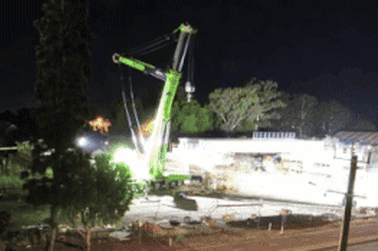
Carlisle station beams being placed on the elevated line.
On the morning of November 20, Western Australia’s Transport Minister Rita Saffioti and department bureaucrats collectively held their breaths as they pulled the trigger on the lengthiest and most disruptive rail line shutdown in Perth’s history.
Boom gates were switched off and bells went silent on the Armadale line, so work could begin on yet another jewel in the Metronet crown – an 18-month, $2 billion partial elevation and extending it to Byford. It is a project unlike any Perth has ever seen.
In place of the trains, a fleet of 100 buses was deployed to ensure the 530,000 residents of the south-east corridor were not left stranded, but despite years of planning, Saffioti was still nervous something would go wrong.
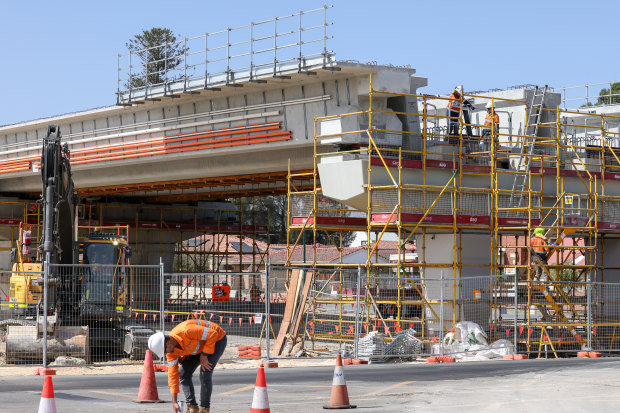
Work will start on the Carlisle station imminently. Credit: Colin Murty
Three months on from that gut-churning morning, Saffioti is breathing easier as construction gathers steam and commuters are relatively content to take the bus despite their commutes taking longer.
“The feedback from everyone is they’ve never seen anything quite like it,” Saffioti told WAtoday ahead of construction reaching the three-month mark.
Saffioti was so pleased with the pace of the project she gave her firmest commitment yet that commuters would be able to board trains on the new line by May 2025.
“I’m 100 per cent confident,” she said.
The transport minister was acutely aware the timeline coincided with the March 2025 election.
She joked she “likes to dream” that voters could take the train to their polling booths on election day, but is content with May.
“We were originally wanting to start in March last year, but we moved it back because we knew we weren’t ready,” she said.
The task ahead
The transformation of the Armadale line is actually dozens of projects bundled into one.
The line will be extended out to Byford; about 5.5 kilometres of rail will be elevated to replace 13 level crossings from Lathlain to Armadale; and seven new stations will be built.
The Thornlie to Cockburn link will also start operations as the Armadale line reopens, and Water Corp is also using the shutdown period to upgrade the century-old water pipe that runs under the train line.
Planning began for the first iteration of the level crossing removal project and Byford extension in 2019, but more has been added to the project since then.
It has required a mammoth effort for the government to arrive at its current level of confidence.
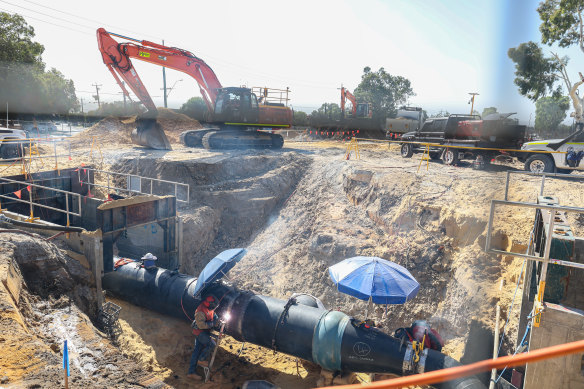
There are dozens of major projects happening all at once during the Armadale line shutdown.Credit: Colin Murty
Major upgrades to power infrastructure were completed before the line was shut down, as was the prefabrication of large components. Contractors have taken over entire industrial yards to store the huge concrete beams that will elevate the rail.
The level crossing removal program and Byford extension were both slated to cost just over $900 million but like other Metronet projects it has been subject to huge cost escalations and blowouts thanks, partly to increased scope, but mostly because of scarcity of labour and increased materials costs.
Saffioti said staff from across the sector had deep-dived into the labour and material capacity of WA’s already overheated infrastructure and construction sector at a level never done before.
Information is being shared with project contractors the Armadale Line Upgrade Alliance and MetCONNX Alliance, partly because of lessons from the Forrestfield Airport Link, which opened two years later than promised.
One of those lessons, Saffioti said, came when a sinkhole opened up on Dundas Road due to work on the tunnels the same weekend the West Coast Eagles smashed the Melbourne Demons at Optus Stadium to secure their entry into the 2018 grand final.
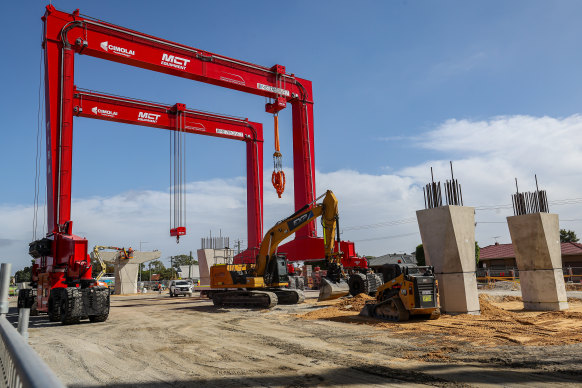
Four large gantry cranes have been deployed to help build the elevated rail. Credit: Colin Murty
She said response efforts in that incident were hampered because the work was being done at the same time the Eagles were playing.
“Had they been working a bit better with the government, they would have known not to do that very delicate bit of work on that weekend because when it went bad, there was no one around to help them because all were watching the football game,” she said.
There have been no major incidents on the Armadale line so far and Saffioti said the project was roaring along.
About 15 kilometres of track on the city end and 23 kilometres on the Armadale end, as well as about 38,000 sleepers, have already been removed.
For the inner-city portion, 40 per cent of piling works are complete, while 83 of 131 piles for the Armadale viaduct are installed.
The first L-beams were lifted into place for the Carlisle station last week and works on the station are imminent.
Six-storey gantry cranes capable of lifting 120 tonnes have been deployed to help lift and place the 532 L-beams, 332 piers and 155 headstocks required for the project.
At its peak in the middle of the year, the total workforce on the project is expected to hit about 1400 workers.
Saffioti ‘grateful’ to residents in south-east
Armadale’s replacement bus exchange sits just south of where the old station used to stand. On Friday morning, everything was running smoothly.
The 903 and 221 buses are the rail replacements of choice for those travelling into the city or Cannington, but most commuters WAtoday spoke to preferred the 221 thanks to its limited stops.
Most commuters said their commute took longer than when the trains were running, and some were aggrieved they weren’t eligible for the state government’s six months of free transport offer.
But, for the most part, they were happy with the service.
Maiwase Katambi said her commute to the city had increased from 40 minutes on the train to an hour and 10 minutes by bus.
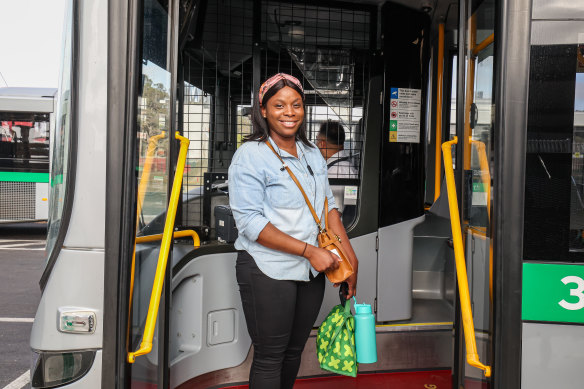
Maiwase Katambi said her bus journey to the city took a lot longer than the train.Credit: Colin Murty
She struggled initially to work out bus routes that suited her, but has adjusted, and her biggest bugbear was that the live tracking on the Transperth app was hit-and-miss.
International student Patricia Balog bused from Armadale to Cannington two days a week to her college and said the bus was more convenient because it dropped her closer to her destination.
She said she saved about $20 a week thanks to the free transport.
Since beginning in November, rail replacement buses have gradually increased from carrying 68 per cent of the normal commuter numbers on the Armadale line to a high of 94 per cent in January.
That dropped back down to 83 per cent by the end of January, but those commuters haven’t all jumped in their car, as counts suggest only a small increase in traffic on the main arterial road, Albany Highway.
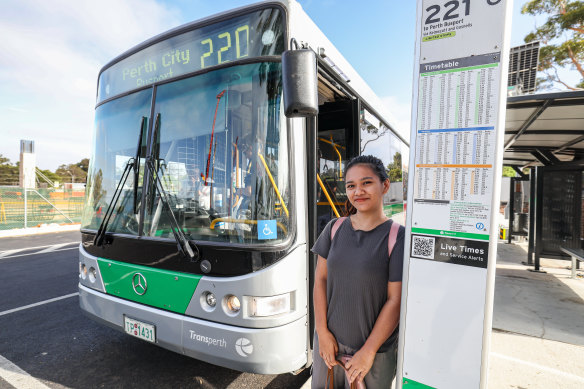
International student Patricia Balog said the bus dropped her closer to her college than the train.Credit: Colin Murty
Saffioti said it was these commuters who were top of mind when her government planned the 18-month shutdown, and she was grateful to south-east residents that they had taken to the new system so well.
“I know that they haven’t seen any real investment for decades,” she said.
“I’m very grateful that not only that they’ve welcomed it, but also they’re proud of it because it’s going to be a major asset to their community.”
Start the day with a summary of the day’s most important and interesting stories, analysis and insights. Sign up for our Morning Edition newsletter.